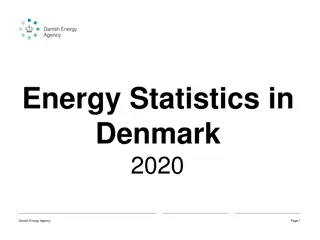
Understanding Word Order Variation in Arabic Sentences
Explore the fundamental aspects of word order variation in Arabic sentences, including the VSO and VOS structures, the influence of syntactic and contextual factors on ordering, and the importance of fronting and postponement for emphasis. Learn about obligatory fronting of objects and the cases where it occurs due to pronominal enclitics and noun subjects.
Download Presentation

Please find below an Image/Link to download the presentation.
The content on the website is provided AS IS for your information and personal use only. It may not be sold, licensed, or shared on other websites without obtaining consent from the author. If you encounter any issues during the download, it is possible that the publisher has removed the file from their server.
You are allowed to download the files provided on this website for personal or commercial use, subject to the condition that they are used lawfully. All files are the property of their respective owners.
The content on the website is provided AS IS for your information and personal use only. It may not be sold, licensed, or shared on other websites without obtaining consent from the author.
E N D
Presentation Transcript
WORD ORDER WORD ORDER VARIATION IN ARABIC VARIATION IN ARABIC
Verbal Sentence Verbal Sentence The basic word order in a verbal The basic word order in a verbal sentence is: sentence is: V( V(erb erb) S( Although Arabic allows flexibility in Although Arabic allows flexibility in word order, there are examples where word order, there are examples where word order is fixed: word order is fixed: ) S(ubject ubject) O( ) O(bject bject). ).
VSO: VSO: :VERB :VERB : SUBJECT : SUBJECT : OBJECT : OBJECT VOS: VOS:
Variation in the ordering of Variation in the ordering of sentence elements is dependent sentence elements is dependent on on syntactic, stylistic, rhetorical syntactic, stylistic, rhetorical and contextual factors and contextual factors such as focus, interest and importance focus, interest and importance. . such as
Important/emphasized elements Important/emphasized elements are brought into focus by being are brought into focus by being fronted fronted or or postponed postponed
REORDERING ELEMENTS IS REORDERING ELEMENTS IS EITHER EITHER OBLIGATORY OBLIGATORY ( (SYNTACTICALLY MOTIVATED SYNTACTICALLY MOTIVATED), OR OPTIONAL OPTIONAL ( ( FOR STYLISTIC, FOR STYLISTIC, RHETORIC OR CONTEXTUAL RHETORIC OR CONTEXTUAL FACTORS FACTORS) ) ), OR
( (i i) )Obligatory fronting of the Obligatory fronting of the object object
The obligatory fronting of the object entails The obligatory fronting of the object entails the postponement of the agent .This occurs the postponement of the agent .This occurs in the following cases: in the following cases: ( (1 1) ) If the object is a pronominal enclitic If the object is a pronominal enclitic and the subject is a noun: and the subject is a noun:
( (2 2) )If the subject is restricted by the If the subject is restricted by the restrictive particle restrictive particle ) except except(. .
( (3 3) )If the subject has a possessive If the subject has a possessive pronominal suffix that refers to the pronominal suffix that refers to the object. object.
( (4 4) )If the object is an interrogative If the object is an interrogative particle. particle.
( (5 5) )If the object is preceded by If the object is preceded by for for( ) as as
( (6 6) )If the object is an independent If the object is an independent pronoun pronoun
(ii) (ii)Optional fronting of the object Optional fronting of the object Arabic allows optional fronting of the object as one of a number of syntactic strategies employed for focusing on a certain element.
vso vso It's Zayd who killed Ali It's Zayd who killed Ali vos vos It It s Ali that Zayd killed s Ali that Zayd killed
OTHER INSTANCES OF OBJECT OTHER INSTANCES OF OBJECT FRONTING: FRONTING:
Fronting of the object can be used to Fronting of the object can be used to achieve a contrastive effect: achieve a contrastive effect: ) ( It's a poem that Ali wrote. (not a story) It's a poem that Ali wrote. (not a story)
The object precedes the subject The object precedes the subject when the subject is heavy and when the subject is heavy and long: long:
Nominal Sentence Nominal Sentence The basic word order in a The basic word order in a Nominal sentence is: Topic Nominal sentence is: Topic Comment Comment +
Like verbal sentences, word order Like verbal sentences, word order reversal in nominal sentences involves reversal in nominal sentences involves fronting of the comment fronting of the comment, which may be either either obligatory (syntactically obligatory (syntactically motivated) motivated) or or optional , which may be optional
( (i i) ) Obligatory fronting of the Comment Obligatory fronting of the Comment The Comment is obligatorily fronted in the following The Comment is obligatorily fronted in the following instances instances: ( (1 1) ) If the Comment is an adverbial or a prepositional If the Comment is an adverbial or a prepositional phrase and the Topic is indefinite phrase and the Topic is indefinite. .
( (2 2) )If the Comment is an interrogative If the Comment is an interrogative particle. particle.
( (3 3) )If the Topic has a possessive If the Topic has a possessive pronominal suffix that refers to the pronominal suffix that refers to the Comment. Comment.
( (4 4) )If the Comment is restricted by the If the Comment is restricted by the exceptive particles exceptive particles but and but and only: only:
(ii) ii)Optional Fronting of the Comment Optional Fronting of the Comment The optional fronting of the Comment The optional fronting of the Comment is one of the strategies employed by is one of the strategies employed by speakers/writers to mark contrast or speakers/writers to mark contrast or focus focus
The Comment, which is a place adverbial, is fronted to signal contrast. If someone says that the girl is in the house, and the speaker decides to correct him/her, he/she produces the above sentence to assert that the girl is in the garden, not in the house.
OTHER EXAMPLES OF OPTIONAL OTHER EXAMPLES OF OPTIONAL FRONTING OF THE COMMENT: FRONTING OF THE COMMENT:






















